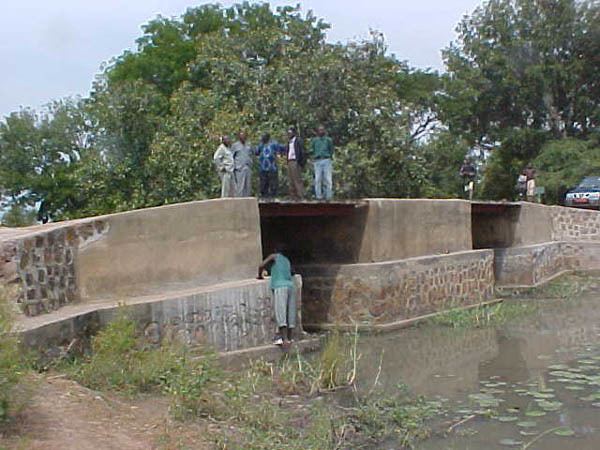 | ||
Transport infrastructure within Chad is generally poor, especially in the north and east of the country. River transport is limited to the south-west corner. As of 2011 Chad had no railways though two lines are planned - from the capital to the Sudanese and Cameroonian borders.during the wet season, especially in the southern half of the country. In the north, roads are merely tracks across the desert and land mines continue to present a danger. Draft animals (horses, donkeys and camels) remain important in much of the country.
Contents
- Railways
- Highways
- Waterways
- Pipelines
- Seaports and harbors
- Airports
- Airports with paved runways
- Airports with unpaved runways
- References
Fuel supplies can be erratic, even in the south-west of the country, and are expensive. Elsewhere they are practically non-existent.
Railways
As of 2011 Chad had no railways. Two lines are planned to Sudan and Cameroon from the capital, with construction expected to start in 2012.
Highways
Chad has a total of 33,400 km of roads of which approximately 500 km are paved. Some, but not all of the roads in the capital N'Djamena are paved. Outside of N'Djamena there is one paved road which runs from Massakory in the north, through N'Djamena and then south, through the cities of Guelendeng, Bongor, Kélo and Moundou, with a short spur leading in the direction of Kousseri, Cameroon, near N'Djamena. Expansion of the road towards Cameroon through Pala and Léré is reportedly in the preparatory stages.
Waterways
Most rivers flow but intermittently. On the Chari, between N’Djamena and Lake Chad, transportation is possible all year round. In September and October, the Logone is navigable between N’Djamena and Moundou, and the Chari between N’Djamena and Sarh. Total waterways cover 4,800 km (3,000 mi), of which 2,000 km (1,250 mi) are navigable all year.
Chari and Logone Rivers are navigable only in wet season (2002). Both flow northwards, from the south of Chad, into Lake Chad.
Pipelines
Since 2003, a 1,070 km pipeline has been used to export crude oil from the oil fields around Doba to offshore oil-loading facilities on Cameroon's Atlantic coast at Kribi.
Seaports and harbors
None (landlocked).
Chad's main routes to the sea are:
In colonial times, the main access was by road to Bangui, in the Central African Republic, then by river boat to Brazzaville, and onwards by rail from Brazzaville to Pointe Noire, on Congo's Atlantic coast. This route is now little used.
There is also a route across Sudan, to the Red Sea, but very little trade goes this way.
Links with Niger, north of Lake Chad, are practically nonexistent; it is easier to reach Niger via Cameroon and Nigeria.
Airports
As of 2012 Chad had an estimated 58 airports, only 9 of which had paved runways. Air Tchad (60 percent state owned) provides internal service to 12 locations but suffers from lack of fuel and equipment. The international airport at N’Djamena was damaged in fighting in 1981, but is now served by several international carriers including Air Afrique, which is partly owned by Chad. Another major airport, developed as a military staging area, is located at Sarh. In 2003, scheduled airlines in Chad carried about 46,000 passengers on domestic and international flights.
Airports with paved runways
Statistics on airports with paved runways as of 2012:
List of airports with paved runways:
Airports - with unpaved runways
Statistics on airports with unpaved runways as of 2012:
